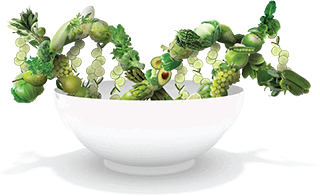Let’s talk about preservatives in foods. Where they hide in our food supply, why they’re added in the first place, and how our bodies are affected by them.
What is a preservative? It’s a substance added to foods to make them last longer, i.e., preserving them. They’re found in foods that would normally go bad quickly. They work to preserve food in a few different ways; some prevent the growth of bacteria and molds while others prevent fats from going rancid, or spoiling. They can be found everywhere- in bread, crackers, pastries, meats, poultry, candy, ice cream, wine -the list seems endless. Foods with preservatives are generally more processed and less nutritious to begin with (red flag) so choose them less often!
Let’s start with the nitrites, which include nitrates and nitrosamines. They’re added to processed meats (bacon, ham, sausages, and lunch meats) to keep the pink color and prevent browning. They’re listed on labels as sodium nitrite and sodium nitrate which, at high heat, turn into nitrosamines. It’s the nitrosamines that are carcinogenic and have the same cancer-inducing substances found in cigarette smoke. A quick note here: nitrates are found in vegetables, such as beets, and are NOT the preservative kind added to foods. Natural nitrates are good blood vessel dilators that keep blood pressure healthy.
Let’s move on to the cluster of preservatives that are phosphate additives. Consuming them directly adds to phosphorus levels in the bloodstream. How well the body clears that extra phosphorus is dependent upon each individual. This can become an issue with repeated intake over time and in those who have any predisposition to kidney problems. How do you recognize them on labels? By the ‘phos’ root as part of their name (phosphoric acid, dicalcium phosphate, disodium phosphate, and trisodium phosphate to name a few). These are found in colas, creamers, cereals, and bread products.
Next up are BHA and BHT. No need for technical terms because BHA and BHT will be listed on labels. Both are antioxidants added to prevent fats from going rancid. They’re approved as safe in small doses and typically found in margarine and spreads, salad dressings, and instant mashed potatoes. Unfortunately, they’re also listed as ‘possibly carcinogenic to humans’ and, since they’re added to processed and pre-packaged foods which are generally less nutritious to begin with, it’s best to limit them.
Then there are sulfites, or sulfur-containing preservatives, such as sulfur dioxide. These are found in dried fruit, wine, sausages and can commonly trigger allergy type symptoms like hives, itching, sneezing, and even asthma attacks.
Do you recognize the names sodium benzoate and potassium benzoate? They’re commonly added to non-alcoholic drinks like soft drinks, bottled flavored teas, or mixers and can form the compound benzene which is a known carcinogen.
Lastly, salt is a preservative on its own (think salt-cured fish) and can be used as a medium for other preservatives mentioned earlier (sodium nitrate, sodium nitrite, phosphoric acid, etc.). When salt is used as a medium for preservatives, it increases the food’s sodium content. Aside from using salt as its own ingredient, it’s why processed foods are the largest source of sodium in the American diet.
So, what’s the common thread? Processed foods are where you’ll find the most preservatives with usually the least nutritional value. Choose unprocessed, whole foods in their original forms when possible. Your body will thank you with less bloating, sharper thinking, better sleep, and happier digestion.
Don’t forget to join weekly live topics on Facebook, Tuesdays, 1:00 pm CT.
In good health,

